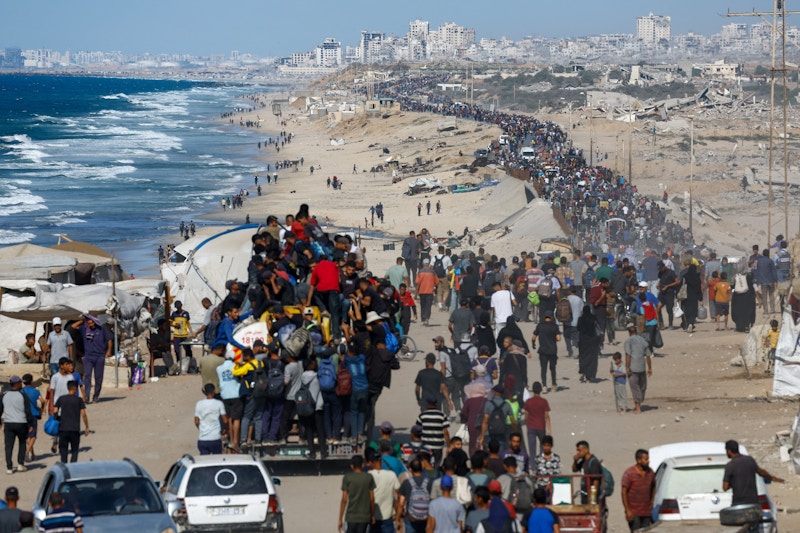Tens of thousands of Palestinians began returning to northern Gaza over the weekend after a ceasefire took effect, following Israel and Hamas’s approval of a deal to “end the war” and exchange prisoners.
The Israeli military said the ceasefire officially began at 12pm local time (9 am GMT) after the completion of its withdrawal to agreed-upon lines of the first phase.
The Israeli government ratified the agreement on Friday morning, just hours after Hamas announced that a deal had been reached.
Israel’s public broadcaster, Kan, on Thursday published a leaked copy of the agreement’s first phase signed in Egypt, which states that the war would “immediately end” once approved by Israel.
The document also specifies that the first step in implementation will be a formal announcement by US President Donald Trump declaring the end of the war in Gaza. Trump is expected to visit Israel on Monday.
On Thursday, Hamas chief negotiator Khalil al-Hayya confirmed that the Palestinian movement had also approved the agreement to end the war.
He added that the United States and other mediators had provided guarantees that the signing of the deal would mean the war “has ended indefinitely.”
However, Israeli air strikes, artillery fire and gunfire were reported in Gaza City and Khan Younis on Friday morning. No injuries were reported.
Israeli forces also carried out bombings in Gaza on Thursday, after mediators announced a deal had been reached, killing at least eight Palestinians.
By midday on Friday, Israeli tanks had withdrawn from al-Rashid Road, which stretches from southern to northern Gaza and had previously been blocked to prevent displaced people from returning home.
As soon as the troops withdrew, thousands of people were seen flooding back to Gaza City on foot along the road.
Bilal Abu Madin, a Gaza resident, stood by the roadside for over an hour, witnessing thousands of people returning to their war-torn city from which they had been forcibly expelled.
He told Middle East Eye: “I’m here looking at the people returning and I can’t believe it after everything we’ve been through. Is what we’re seeing real or a lie? We were afraid we wouldn’t be able to return to the north, but it seems we’ve reached the end [of the war].”
Abu Madin said he was with friends in central Gaza when they heard the news that al-Rashid Road had been reopened. They immediately grabbed their belongings and headed straight back, he said.
“I’ll stay here watching for a while to take it all in, then I’ll go to Gaza City,” he added. ‘We’ve seen things in this war that even movies couldn’t come up with.’
The next stage of the agreement is scheduled for midday on Monday – 72 hours after the withdrawal is complete – when 20 living Israeli captives and several bodies are expected to be released. In exchange, Israel will release around 2,000 Palestinian prisoners, including 250 serving life sentences.
However, the list of those to be freed has not yet been finalised. Reports on Thursday indicated ongoing disagreements over the identities of several prisoners, with Hamas pushing for the release of high-profile figures, and Israel objecting.
Among the six reportedly disputed names are Marwan Barghouti, a popular Fatah military leader; Ahmad Sa’adat, head of the Popular Front for the Liberation of Palestine; and senior Hamas figures Hassan Salama, Abdullah Barghouti, Ibrahim Hamed and Abbas al-Sayed.
At least 400 aid trucks are also expected to enter Gaza, though there have been no reports of their arrival so far.
The ceasefire deal marks the first phase of the US’s so-called “peace plan”, with further stages to be negotiated at a later date.
These are expected to include the full withdrawal of Israeli forces from Gaza, the disarmament of Hamas, and the deployment of international troops in the territory.
Neither Hamas, Israel, nor the mediators have clarified the timeline for these talks. It also remains unclear whether the continuation of the ceasefire depends on agreement over the subsequent stages.
[ SOURCE: ASSOCIATED PRESS and REUTERS ]

